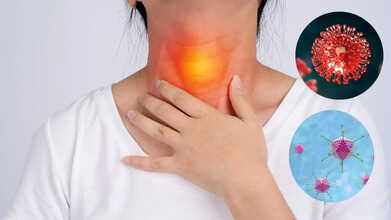- Health Conditions A-Z
- Health & Wellness
- Nutrition
- Fitness
- Health News
- Ayurveda
- Videos
- Medicine A-Z
- Parenting
What Does Poop Look Like? Types, Colours, Shape Chart And More

What Does Poop Look Like? Types, Colours, Shape Chart And More
While much attention is given to what we eat, less focus is placed on the output of our digestive system—poop. However, understanding your stool can provide significant insights into your health, diet, and overall well-being. This guide explores the types of poop, a color chart, and tips for maintaining healthy bowel function.
Poop, or stool, is the byproduct of your digestive system. It comprises digested food, bacteria, salts, proteins, and other substances from the intestines. While it might not be a popular dinner table topic, examining your poop can be a valuable tool for monitoring your gut health.
How to Read The Bristol Stool Chart
The Bristol Stool Chart is a widely used system that categorizes stool into seven types based on texture and appearance. Here’s what each type means:
| Type | Appearance | Indicates What |
| Marbles | Hard, separate lumps | Constipation. Poop is difficult to pass |
| Caterpillar | Lumpy and log-shaped | A sign of mild constipation |
| Hot Dog | Log-shaped with surface cracks | Ideal stool: soft and easy to pass |
| Snake | Smooth, snake-like | Another example of a healthy stool |
| Amoebas | Soft blobs with clear edges | Lack of fiber in the diet |
| Soft Serve | Fluffy, mushy, with ragged edges | Mild diarrhea; could signal dehydration or poor digestion |
| Jackson Pollock | Watery, no solid pieces | Severe diarrhea; stool moves too quickly through the digestive tract |
Poop Colors and What They Mean
Poop color can vary based on diet, medications, or underlying health conditions. Here's a breakdown:
| Color | Possible Causes |
| Brown | Normal; a result of bile and bilirubin |
| Green | Eating green vegetables, food coloring, or rapid digestion |
| Black | Internal bleeding, iron supplements, or black licorice |
| Red | Blood in stool, beets, or red food coloring |
| Pale/Clay | Bile duct issues or certain medications |
| Yellow | Excess fat in stool, often linked to malabsorption |
Signs of Unhealthy Poop
Unhealthy stool can manifest as constipation, diarrhea, or persistent changes in color or texture.
Constipation
- Signs: Hard, lumpy stools (Types 1 and 2).
- Causes: Low fiber or water intake, medications, or infrequent bowel movements.
- Solutions: Increase fiber, hydrate, and exercise regularly.
Diarrhea
- Signs: Watery or mushy stools (Types 6 and 7).
- Causes: Infections, medications, or food intolerances.
- Solutions: Stay hydrated with water or electrolyte drinks and avoid trigger foods.
Bowel Function in Kids
Children's bowel movements can vary, with some children going once a day and others having a bowel movement after each meal. To assess their stool health, the Pediatric Bristol Stool Form can be helpful. Type 3 stools, which are smooth and sausage-shaped, are considered ideal, while Type 4 stools, which are slightly mushy but soft, are also healthy. However, if a child experiences persistent constipation or diarrhea, it's important to consult a pediatrician to address any underlying health concerns.
How to Improve Bowel Health
To maintain or enhance bowel function:
- Include whole grains, fruits, and vegetables.
- Drink at least eight glasses of water daily.
- Encourage a healthy gut microbiome.
- Eating and using the restroom at regular times can help.
- Use a footstool to improve the angle during bowel movements.
When to See a Doctor
Changes in stool don’t always signal alarm, but there are red flags to watch for. Persistent diarrhea or constipation lasting more than three days, black or tarry stools, pale stools, or blood in your stool should be taken seriously. If these symptoms occur, it’s important to consult a healthcare provider. Additionally, if children experience persistent constipation or diarrhea, it’s essential to consult a pediatrician for proper evaluation and care. Early attention to these signs can help address underlying health issues before they worsen.
Understanding your bowel movements is not just a quirky fascination but a critical part of health awareness. If something seems off, don’t hesitate to seek medical advice. After all, listening to your body—even in the bathroom—can lead to better overall well-being.
Adenovirus vs Cold vs Flu: How To Tell The Difference As This Mystery Illness Spreads

Credits: Canva
Although many people are only now becoming aware of it, adenovirus is being widely described as a “mystery illness spreading worldwide,” and that description feels accurate when you consider how many people are reporting symptoms at the moment. Adenovirus can cause fever, a runny nose, sore throat, and stomach discomfort, which makes it difficult to distinguish from a regular cold or the so-called “super flu” that is currently circulating. If you are feeling unwell, or concerned about catching an infection just before the holiday season, Dr Deborah Lee from Dr Fox Online Pharmacy explains how to tell adenovirus apart from the common cold and from the H3N2 flu strain.
What Is Adenovirus?
Adenovirus refers to a large group of viruses that can lead to infections ranging from mild to more severe. These viruses can affect the respiratory tract, eyes, digestive system, and urinary tract, often causing symptoms that look very similar to a cold or flu.
Adenoviruses are hardy, spread mainly through respiratory droplets, and can infect people throughout the year. Children and individuals with weaker immune systems may experience more serious illness, but most people recover with rest and fluids, according to the Cleveland Clinic.
Adenovirus vs Cold: How Does Adenovirus Differ From Common Cold?
Adenovirus is one of several viruses that can trigger cold-like symptoms. It helps to think of a cold as a set of symptoms rather than a single illness, with adenovirus being just one possible cause. “Adenovirus is just one virus that can cause the common cold,” says Dr Lee. She adds that many other viruses can also be responsible, including respiratory syncytial virus (RSV), rhinoviruses, parainfluenza viruses, and coronaviruses.
Identifying the exact virus behind your cold symptoms is very difficult. “It is pretty much impossible for you or a doctor to know which virus is causing your cold symptoms,” Dr Lee explains.
Adenovirus vs Flu: How Does Adenovirus Differ From The Flu?
“The flu can be extremely unpleasant, whereas adenovirus is usually mild,” Dr Lee says when comparing the two. She explains that flu symptoms often appear suddenly, sometimes within hours, and are usually marked by a high fever and severe discomfort.
According to Dr Lee, flu symptoms can include:
- A high temperature between 38°C and 40°C
- Joint pain and muscle aches
- Headache
- Sore throat
- Blocked or stuffy nose
- Dry cough
- Extreme fatigue
In contrast, adenovirus symptoms, when they appear at all, tend to develop slowly over several days, Dr Lee notes.
Other important differences between adenovirus and flu include:
- Adenovirus infections can occur at any time of year, while flu is more common during winter
- Adenovirus frequently causes pink eye, whereas influenza may lead to red or irritated eyes but less commonly
- Adenovirus often causes digestive symptoms such as vomiting and diarrhoea, while flu can cause these but does so less often
- Adenovirus is generally less likely to cause serious complications than influenza
Adenovirus: How To Tell If You Have Adenovirus Or Cold Or Flu?
Although adenovirus and common cold symptoms often overlap, the intensity of “super flu” symptoms usually stands out. Even so, Dr Lee explains, “The only way to really know the cause of your symptoms is to have a swab taken by a medical practitioner. This may be from the nose, throat, eye, urine, or stool.”
In most cases, testing is unnecessary and unlikely to be offered. “Because the vast majority of these viral infections are mild and self-limiting, this is rarely done,” says Dr Lee. “Treatment for any cold is symptomatic only.” She adds that extra caution is needed for babies and young children, older adults, pregnant women, and people with weakened immune systems.
New Flu Symptoms Raise Alarm As ‘Aggressive’ Strain Spreads Rapidly: Where Is It Spreading The Most In US

Credits: Canva
A newly identified flu strain that spreads easily and causes more severe illness is driving infections this season. The strain, a mutated form of influenza A H3N2 known as subclade K, has been linked to a growing number of cases worldwide, including across the United States.
According to the World Health Organization, the K variant represents “a notable evolution in influenza A (H3N2) viruses,” prompting concerns among experts about how well this season’s flu vaccine may work against it.
Health specialists say the K variant is associated with stronger flu symptoms such as fever, chills, headaches, exhaustion, cough, sore throat, and a runny nose. A CDC report found that of the 216 influenza A(H3N2) samples collected since September 28, nearly 90 percent were identified as subclade K. As this strain continues to circulate, here is a closer look at the symptoms being reported and the areas where flu activity is currently highest.
New Flu Symptoms
Doctors say the symptoms caused by the mutated H3N2 strain closely resemble those of typical seasonal influenza A. Common symptoms include:
- Fever
- Chills
- Body aches
- Headache
- Severe fatigue
- Nasal congestion or a runny nose
- Cough
Flu symptoms often come on abruptly, Hopkins explains, describing it as a sudden, overwhelming feeling of being unwell.
The CDC notes that flu symptoms can overlap with those of COVID-19 and other respiratory viruses, making testing important. Three-in-one rapid home tests that check for influenza A, influenza B, and COVID-19 are now available, and experts advise keeping them on hand when possible. If you test positive for the flu, antiviral medications may help shorten the illness and lessen symptom severity, Hopkins adds.
Flu Shots: Where Is Subclade K Spreading In The US?
Below are the states and regions reporting the highest levels of medical visits related to flu-like illness, which may not reflect confirmed flu cases. The data reflects CDC reporting for the week ending December 25.
Very High (Level 1)
- New York City
Very High (Level 2)
- New York State
Very High (Level 3)
- New Jersey
- Rhode Island
- Louisiana
- Colorado
High (Level 1)
- Massachusetts
- Connecticut
- Michigan
- Idaho
- South Carolina
High (Level 2)
- New Mexico
High (Level 3)
- Washington, D.C.
- Maryland
- North Carolina
- Georgia
The CDC estimates that the flu has already caused at least 4.6 million illnesses, 49,000 hospitalizations, and 1,900 deaths so far this season. Health officials continue to recommend the flu vaccine as the most effective way to reduce the risk of serious illness.
Super Flu Symptoms: How to Protect Yourself From the Flu
During peak respiratory virus season, experts advise taking basic precautions to lower your risk and protect others:
- Keep vaccinations up to date.
- Get tested if symptoms appear.
- If you test positive, stay home until you are fever-free for 24 hours without medication and your symptoms are improving. If you do not have a fever, remain home for five days after symptoms begin.
- Avoid close contact with people who are sick.
- Wear a mask in crowded indoor settings.
- Wash your hands often.
- Cover your mouth and nose when coughing or sneezing.
Taking Tramadol? Scientists Warn It May Cause More Harm Than Relief

Credits: Canva
Tramadol: A broad review of previously published studies suggests that tramadol, a powerful opioid often prescribed for long-term pain, provides only modest pain relief for the conditions it is most commonly used to treat. The conclusions come from a combined analysis of existing research, published online in BMJ Evidence-Based Medicine.
The review also highlights a greater risk of serious side effects, including heart-related problems. In light of these findings, the researchers say tramadol’s potential harms are likely to outweigh its benefits and advise that its use should be scaled back.
Don't Miss: Sore Throat Relief At Home: 7 Remedies That Actually Help
What Is Tramadol?
Tramadol is a dual-mechanism opioid prescribed for moderate to severe pain, both short-term and long-lasting. For this reason, it features in several medical guidelines as an option for pain control, the researchers note. Prescriptions for tramadol have increased sharply over the past few years, making it one of the most widely used opioids in the United States.
This rise may be linked to the belief that tramadol causes fewer side effects and carries a lower risk of dependence than other fast-acting opioids. Although earlier systematic reviews have looked at tramadol, the researchers point out that no previous review has fully assessed both its effectiveness and safety across a wide range of chronic pain conditions.
Tramadol: Why Are Scientists Cautioning Against Tramadol Use?
According to Scitech Daily, the research team searched medical databases for randomized clinical trials published up to February 2025. These studies compared tramadol with a placebo, or dummy treatment, in people living with chronic pain, including cancer-related pain.
Nineteen clinical trials involving 6,506 participants with chronic pain met the criteria for inclusion. Five studies examined tramadol’s effect on nerve pain; nine focused on osteoarthritis; four assessed chronic lower back pain; and one looked at fibromyalgia. Eight trials also reported the rate of serious side effects during follow-up periods ranging from seven to sixteen weeks.
Don't Miss: Flu Shot: Will Getting Vaccinated Twice This Year Boost Immunity?
Statistical analysis showed that tramadol was linked to about twice the risk of harm compared with placebo. This increase was largely driven by a higher number of cardiac events, including chest pain, coronary artery disease, and congestive heart failure. Tramadol use was also associated with a greater risk of certain cancers, although the researchers describe this finding as “questionable” due to the short follow-up period.
When all trial data were pooled, tramadol treatment was also tied to a higher likelihood of less severe side effects such as nausea, dizziness, constipation, and drowsiness. The researchers acknowledge that the study outcomes carried a high risk of bias. However, they add that this likely means the benefits of tramadol may be overstated while its risks could be underestimated.
Tramadol Side Effects
According to the NHS, like most medicines, tramadol can cause side effects, although not everyone experiences them. You should speak to your doctor or pharmacist if any of the side effects listed below trouble you or persist.
- Very common side effects
- Very common side effects affect more than 1 in 10 people and include:
- feeling sick
- feeling dizzy
Tramadol: Common Side Effects
These occur in more than 1 in 100 people. There are steps that can help manage them.
- headaches
- feeling sleepy, tired, dizzy, or “spaced out”
- nausea or vomiting
- constipation
- dry mouth
- sweating
- low energy
Tramadol: Serious Side Effects
Serious side effects affect fewer than 1 in 100 people.
Call your doctor or contact 111 immediately if you:
- feel dizzy, tired, and unusually low on energy, which may signal low blood pressure
- experience hallucinations, such as seeing or hearing things that are not there
- feel confused
- feel extremely sleepy
- have difficulty passing urine or are unable to urinate
Does Tramadol Lower Blood Pressure?
Yes, tramadol can cause a drop in blood pressure, known as hypotension, particularly when standing up suddenly. This can lead to dizziness or fainting, although it is not very common. In rare cases, tramadol may also raise blood pressure, and stopping the drug suddenly can trigger a spike in blood pressure. For these reasons, anyone with concerns about blood pressure should discuss them with their doctor, according to the NHS.
© 2024 Bennett, Coleman & Company Limited

